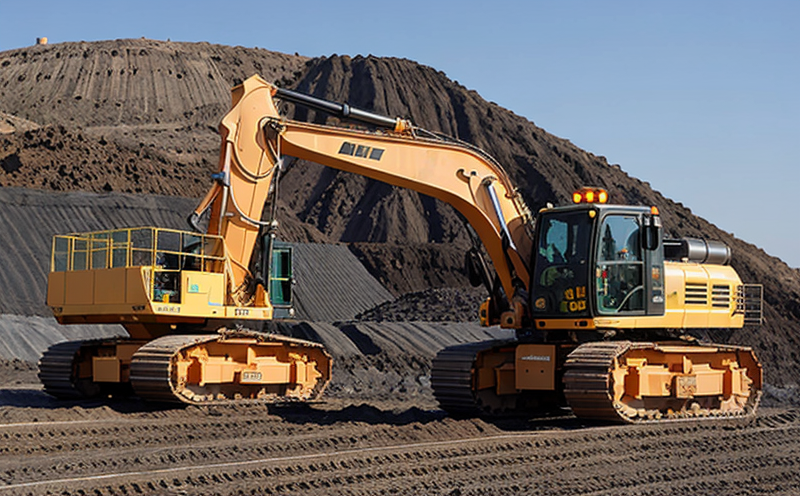What is the purpose of DIN 22257 rope sheave performance testing?
The primary purpose of this testing is to ensure that mining machinery components meet stringent safety and durability standards. This helps prevent equipment failures, reduces downtime, and enhances overall operational efficiency in the mining sector.
Which aspects of rope sheaves are evaluated under DIN 22257?
The standard evaluates static strength, fatigue resistance, and wear characteristics. These tests help ensure that the components can withstand the high-stress conditions typical in mining operations.
How is DIN 22257 rope sheave performance testing conducted?
Testing involves subjecting specimens to controlled loads and cyclic forces that simulate real-world mining conditions. This includes static strength tests, fatigue resistance assessments, and wear evaluations.
Why is compliance with DIN 22257 important for mining operations?
Compliance ensures the safety of personnel and equipment. It also enhances the reliability and longevity of mining machinery, leading to improved operational efficiency and reduced maintenance costs.
What are the key performance parameters measured during DIN 22257 tests?
The key parameters include load capacity, fatigue life, wear rate, and resistance to abrasion. These metrics ensure that rope sheaves can perform reliably under harsh mining conditions.
Which industries benefit most from DIN 22257 rope sheave performance testing?
This test is particularly beneficial for the mining industry, where heavy loads and continuous operation place significant demands on machinery components.
How often should rope sheaves be tested according to DIN 22257?
Testing frequency depends on usage and manufacturer recommendations. However, periodic testing is essential to ensure ongoing compliance with the standard.
What are the potential consequences of non-compliance with DIN 22257?
Non-compliance can lead to equipment failure, safety hazards, and increased operational costs. It is crucial for mining operations to adhere strictly to these standards.
How is DIN 22257 rope sheave performance testing conducted?
Testing involves subjecting specimens to controlled loads and cyclic forces that simulate real-world mining conditions. This includes static strength tests, fatigue resistance assessments, and wear evaluations.
Why is compliance with DIN 22257 important for mining operations?
Compliance ensures the safety of personnel and equipment. It also enhances the reliability and longevity of mining machinery, leading to improved operational efficiency and reduced maintenance costs.
What are the key performance parameters measured during DIN 22257 tests?
The key parameters include load capacity, fatigue life, wear rate, and resistance to abrasion. These metrics ensure that rope sheaves can perform reliably under harsh mining conditions.
Which industries benefit most from DIN 22257 rope sheave performance testing?
This test is particularly beneficial for the mining industry, where heavy loads and continuous operation place significant demands on machinery components.
How often should rope sheaves be tested according to DIN 22257?
Testing frequency depends on usage and manufacturer recommendations. However, periodic testing is essential to ensure ongoing compliance with the standard.
What are the potential consequences of non-compliance with DIN 22257?
Non-compliance can lead to equipment failure, safety hazards, and increased operational costs. It is crucial for mining operations to adhere strictly to these standards.
Why is compliance with DIN 22257 important for mining operations?
Compliance ensures the safety of personnel and equipment. It also enhances the reliability and longevity of mining machinery, leading to improved operational efficiency and reduced maintenance costs.
What are the key performance parameters measured during DIN 22257 tests?
The key parameters include load capacity, fatigue life, wear rate, and resistance to abrasion. These metrics ensure that rope sheaves can perform reliably under harsh mining conditions.
Which industries benefit most from DIN 22257 rope sheave performance testing?
This test is particularly beneficial for the mining industry, where heavy loads and continuous operation place significant demands on machinery components.
How often should rope sheaves be tested according to DIN 22257?
Testing frequency depends on usage and manufacturer recommendations. However, periodic testing is essential to ensure ongoing compliance with the standard.
What are the potential consequences of non-compliance with DIN 22257?
Non-compliance can lead to equipment failure, safety hazards, and increased operational costs. It is crucial for mining operations to adhere strictly to these standards.
What are the key performance parameters measured during DIN 22257 tests?
The key parameters include load capacity, fatigue life, wear rate, and resistance to abrasion. These metrics ensure that rope sheaves can perform reliably under harsh mining conditions.
Which industries benefit most from DIN 22257 rope sheave performance testing?
This test is particularly beneficial for the mining industry, where heavy loads and continuous operation place significant demands on machinery components.
How often should rope sheaves be tested according to DIN 22257?
Testing frequency depends on usage and manufacturer recommendations. However, periodic testing is essential to ensure ongoing compliance with the standard.
What are the potential consequences of non-compliance with DIN 22257?
Non-compliance can lead to equipment failure, safety hazards, and increased operational costs. It is crucial for mining operations to adhere strictly to these standards.
Which industries benefit most from DIN 22257 rope sheave performance testing?
This test is particularly beneficial for the mining industry, where heavy loads and continuous operation place significant demands on machinery components.
How often should rope sheaves be tested according to DIN 22257?
Testing frequency depends on usage and manufacturer recommendations. However, periodic testing is essential to ensure ongoing compliance with the standard.
What are the potential consequences of non-compliance with DIN 22257?
Non-compliance can lead to equipment failure, safety hazards, and increased operational costs. It is crucial for mining operations to adhere strictly to these standards.
How often should rope sheaves be tested according to DIN 22257?
Testing frequency depends on usage and manufacturer recommendations. However, periodic testing is essential to ensure ongoing compliance with the standard.
What are the potential consequences of non-compliance with DIN 22257?
Non-compliance can lead to equipment failure, safety hazards, and increased operational costs. It is crucial for mining operations to adhere strictly to these standards.
What are the potential consequences of non-compliance with DIN 22257?
Non-compliance can lead to equipment failure, safety hazards, and increased operational costs. It is crucial for mining operations to adhere strictly to these standards.





